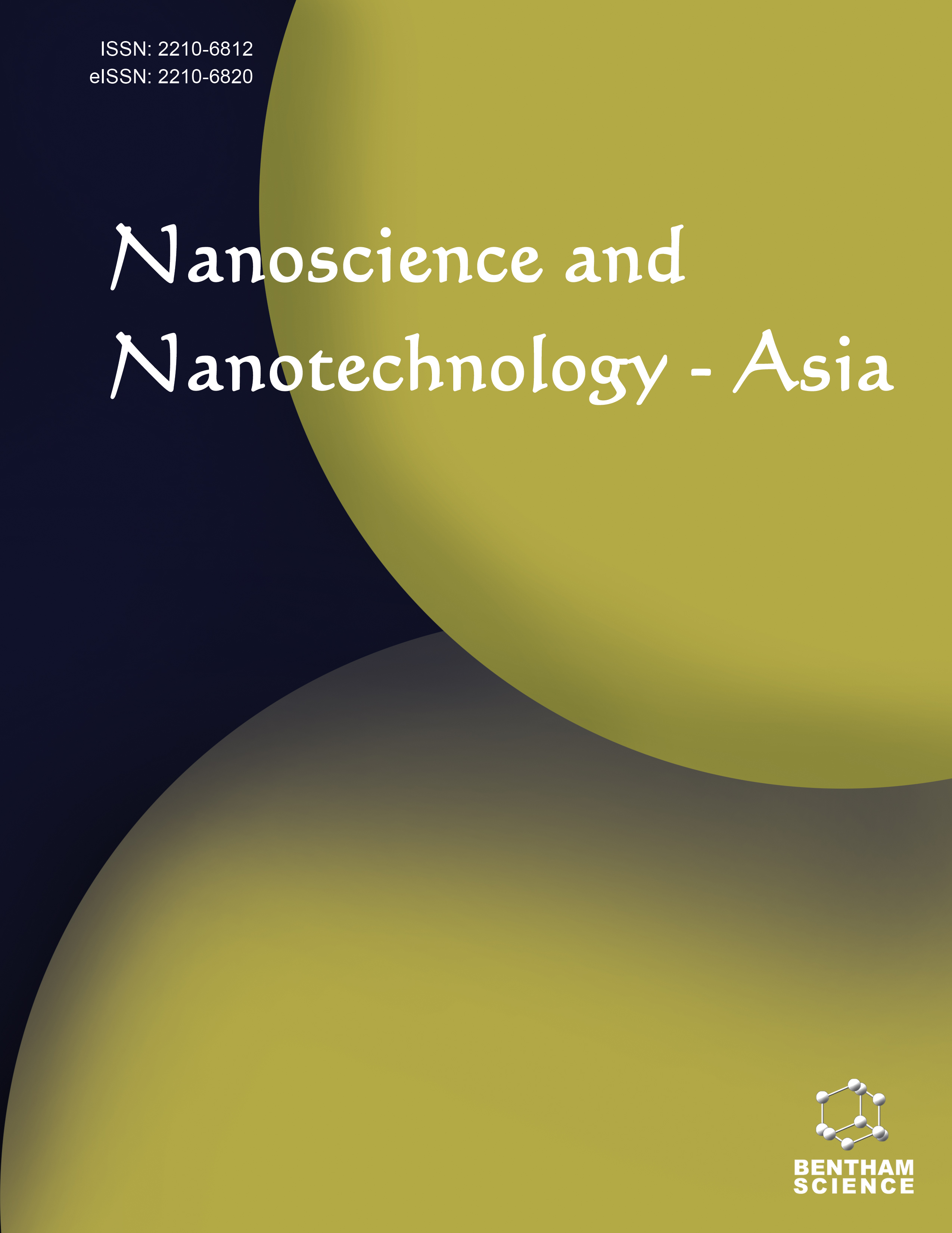- Home
- A-Z Publications
- Nanoscience & Nanotechnology-Asia
- Previous Issues
- Volume 12, Issue 1, 2022
Nanoscience & Nanotechnology-Asia - Volume 12, Issue 1, 2022
Volume 12, Issue 1, 2022
-
-
Synthesis and Applications of Nanoparticles: State of the Art and Future Perspective
More LessAuthors: Smriti Shukla, Mitali Sharma, Sapna Yadav, Avinash Raghupathy, Kartikeya Shukla, Ajit Varma and Arti MishraNanoparticles are being extensively studied these days to grab more knowledge on how they can be used in various fields to increase the yield and hence be beneficial for biotic components of the ecosystem. Chemicals being used in agriculture have caused a lot of damage to the soil and water quality along with the crops, ultimately affecting human health severely. Better alternatives are thus required to achieve higher yields wi Read More
-
-
-
Application of Quantum Dots in Drug Delivery
More LessAuthors: Subham Jain N., Preethi Somanna and Amit B. PatilBackground: The nanotechnology which has vast growth in the research field and the outcome product of nanotechnology is nanoparticles. Quantum dots with a size range of 2-10 nm represent a new form in nanotechnology materials. It has shown widespread attention in recent years in the field of science and its application in drug delivery. Quantum dots are semiconductor nanocrystals which possess interesting prope Read More
-
-
-
Nanotherapeutics in Tumour Microenvironment for Cancer Therapy
More LessAuthors: Dhwani Rana, Sagar Salave, Suraj Longare, Rishabh Agarwal, Kiran Kalia and Derajram BenivalBackground: Cancer continues to be the most annihilating illness and despite vast research in understanding cancer biology as well as rational drug designing progressing profoundly, cancer remains the second leading cause of death worldwide. The conventional chemotherapeutic agents being exploited for cancer therapy contain several limitations, including less selectivity, nonspecific targeting and high off-target effects, and t Read More
-
-
-
The Impact of Hydrogenation Conditions on the Physical Properties of the Degenerated Ni/Al Co-doped Diluted Magnetic Semiconductor Anatase Nanoparticles
More LessAnatase (TiO2) nanoparticles co-doped with Ni/Al ions were synthesized by a thermoprecipitation method. The samples were characterized by using XRay diffraction and optical absorption spectroscopy. The structural/optical investigations established the development of substitutional solid solutions: TiO2:Ni:Al. The magnetization investigations were performed to study the generated stable ferromagnetic properties of the sa Read More
-
-
-
Green Synthesis of Silver Chloride Nanoparticles using Phlomoides Labiosa (Bunge) Adylov, Kamelin & Makhm Herbal Extract by Investigating Antioxidant Properties and Antibacterial Effects
More LessAuthors: Toktam Arkani, Ali Firoznia and Cobra IzanlooBackground: Considering the high cost of nano-particles chemical synthesis and bacteria’s high resistance against antibiotics, investigating silver particles biosynthesis and their effect on clinical and standard strains of different bacteria is very important. Objectives: This study investigates the feasibility of green synthesis of silver chloride nanoparticles by labiosa (Bunge) Adylov, Kamelin & Makhm Phlomoides (Eremostachys lab Read More
-
-
-
Impact of Band-gap Graded Intrinsic Layer on Single-junction Band-gap Tailored Solar Cells
More LessAuthors: Fatima Rasheed J. and V. S. BabuObjectives: The work investigates the performance of intrinsic layers with and without band-gap tailoring in single-junction amorphous silicon-based photovoltaic cells. The work proposes single-junction amorphous silicon solar cells in which band-gap grading has been done between layers as well as within each layer for the first time. Materials & Methods: The samples of hydrogenated amorphous silicon-germanium with different Read More
-
Volumes & issues
Most Read This Month
Article
content/journals/nanoasi
Journal
10
5
false
en


